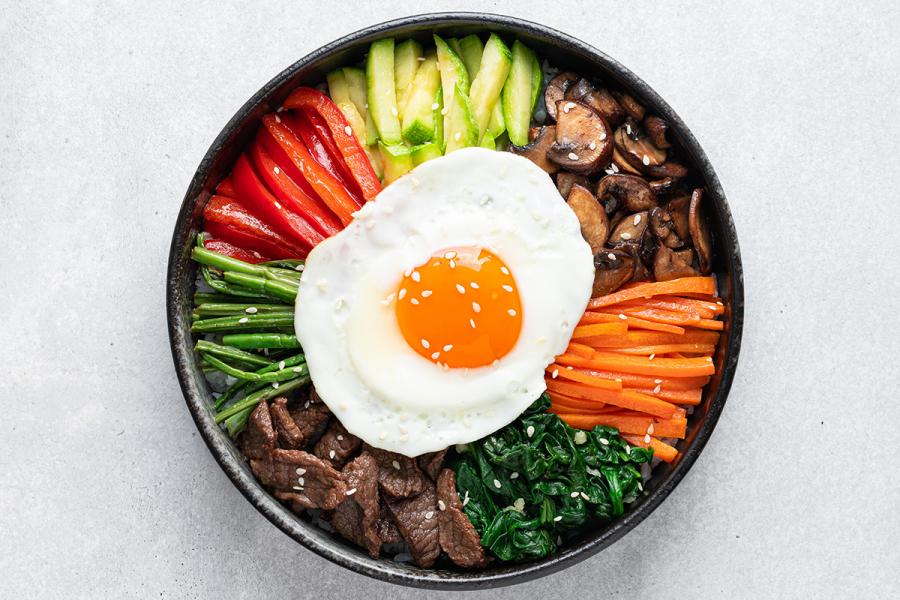Bibimbap
Korean Bibimbap is a popular and delicious rice-based dish. It typically consists of steamed white rice, vegetables, beef, egg, and the chili pepper paste called gochujang. The ingredients are mixed at the table. Bibimbap is usually served with kimchi or pickles on the side.
Ingredients
Instructions
Cook the rice in water 20 minutes. Drain and set apart.
Heat a little sesame oil in a pan. Add the meat with the marinade and cook for 8-10 minutes.
Soak the cucumber strips in salt water for 10-20 minutes. Drain.
Season spinach with 2 teaspoons sesame oil, a pinch of salt and half the sesame seeds, if used. Leave to be used later.
Season bean sprouts with 2 teaspoons sesame oil, a little salt and the rest of sesame seeds, if used. Will use them later.
Sauté the carrots in a little oil until slightly softened, 3-4 minutes, season with salt and set apart.
Sauté the mushrooms in a little oil until slightly softened, 3-4 minutes, season with salt and set apart.
Sauté the zucchini in a little oil until slightly softened, 2-3 minutes, season with salt and set apart.
Place the rice at the bottom of a bowl and arrange the vegetables and meat on top, in the same order thye were prepared and separated by colors. Place the fried egg in the middle.
Serve bibimbap with small bowls of gochujang and sesame oil on the side.
Boiled or soaked vegetables should be well drained and squeezed of excess water.
If using marinated meat, put 2 tablespoons soy sauce, 2 tablespoon minced onion, 1 teaspoon minced garlic, 1 teaspoon grated ginger and the meat. Marinate for 10-15 minutes.
Make sure to cook the meat until browned but still tender.
Notes
You ca cook the rice in a rice cooker.
Use fresh, quality ingredients for maximum flavor. Omit, add or substitute vegetables as you wish. Other vegetables used for bibimbap include green beans, bell peppers, radish, cabbage, red cabbage, lettuce leaves, onion, eggplant, gim (the Korean nori) and some other local vegetables.
Substitute Koean mushrooms with shiitakes, Portobello or ordinary mushrooms.
Instead of mixing sesame seeds with spinach or bean sporuts, you could scatter sesame them on top of the bibimbap. You could also put a little gochujang on top.
You can also serve kimchi and pickles on the side of the bibimbap.
Korean Bibimbap can also be served in a bowl with the ingredients mixed. To make this variation, combine cooked white rice and beef and vegetable mixture in a large bowl and mix well. Top with sunny side up eggs and gochujang and kimchi or pickles, if desired.
Variations
There are many variations as different vegetables and meat could be used. Each Korean region has its own recipe. You can be creative with your toppings and seasonings. It is not difficult to prepare a vegetarian or vega bibimbap.
You can use leftovers of other dishes to prepare bibimbap, for instance, substitute the beef, marinated and cooked, with leftover bulgogi.
Some bibimbap recipes ask for raw eggs, although raw eggs are not recommended.
Source
Korean Bibimbap has been around for centuries and is a popular dish in Korean culture. The seven colors of the ingredients represent luck, wealth and health.
The word bibimbap means mixing rice.
Food in the Asia

